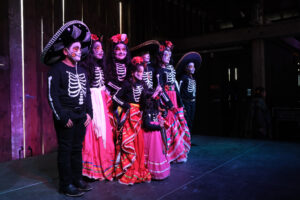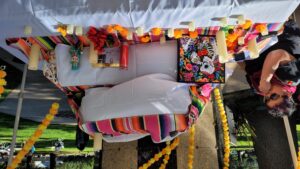
by Yucheng Tang
posted Nov. 13
How can a day that’s about death feel like a huge party?
When I joined the crowd at The Barn at Meriam Park for a Nov. 2 celebration of Day of the Dead — a Mexican tradition called Día de los Muertos in Spanish — I didn’t expect it to lead me to reconsideration of a Chinese festival, Tomb Sweeping Day, that was part of my own childhood.
Latin music played loudly in the background. On stage, children whose faces were painted like skeletons danced and sang joyfully. Next to the stage stood a community altar, adorned with photos of deceased loved ones, candles, and marigolds — the flower that is believed to guide spirits back home.

